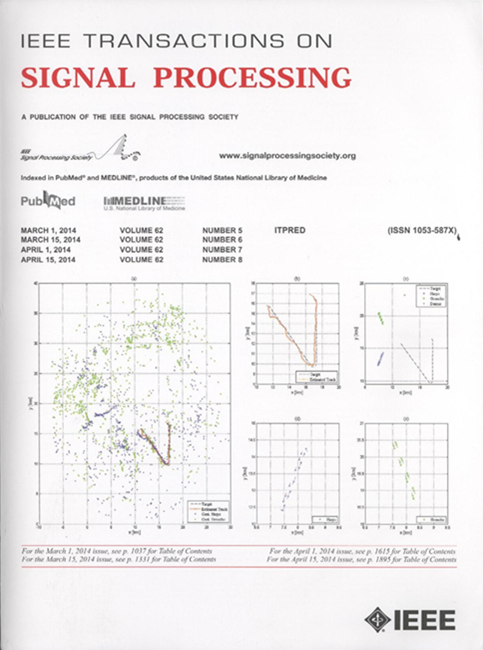边缘修剪:基于数据流的分布式信号处理和机器学习框架
IF 5.8
2区 工程技术
Q1 ENGINEERING, ELECTRICAL & ELECTRONIC
引用次数: 0
摘要
随着智能家居和物联网等应用领域的发展,通过视频、音频、雷达和其他传感器进行的分布式传感正在强劲增长。边缘计算的概念提出将信号和数据分析从靠近传感器的集中式服务器转移,减少数据通信带宽需求和集中式服务器计算负载,并提高数据隐私性。以前在边缘计算领域的工作很少关注跨设备计算的形式化建模。这项工作提出了基于众所周知的数据流抽象的VR-PRUNE-E计算模型。在VR-PRUNE-E中,引入了一种特定类型的弹性网络图,它允许分布式系统在任何单个节点或连接故障后继续运行。除了正式模型之外,本文还介绍了支持所提出的数据流抽象的edge - prune软件框架,以及在真实边缘计算场景下的具体实验结果。研究的设置涵盖了多达128个端点节点和两台服务器的网络。应用示例涵盖了图像分类、目标检测和雷达信号处理等流行的机器学习应用,这些应用基于CNN和变压器架构,扩展了冗余系统配置,提供容错功能。提议的工作也在处理时间方面进行了基准测试,并在计算效率方面比以前的工作高出34%。本文章由计算机程序翻译,如有差异,请以英文原文为准。
Edge-PRUNE: A Dataflow-Based Framework for Distributed Signal Processing and Machine Learning
Distributed sensing through video, audio, radar and other sensors is strongly growing with application areas such as smart homes and Internet of Things. The concept of edge computing proposes shifting signal and data analysis from centralized servers close to the sensors, providing reduction in data communication bandwidth requirements and centralized server computation load as well as improving data privacy. Previous works in the domain of edge computing have paid little attention to formal modeling of computing across devices. This work proposes the VR-PRUNE-E model of computation that is based on the well-known dataflow abstraction. Within VR-PRUNE-E, a specific type of resilient network graph is introduced, which allows the distributed system to continue its operation after the failure of any single node or connection. Besides the formal model, the manuscript introduces the Edge-PRUNE software framework that supports the proposed dataflow abstraction, as well as concrete experimental results on real edge computing scenarios. The explored setups cover networks with up to 128 endpoint nodes and two servers. Application examples cover popular machine learning applications of image classification, object detection and radar signal processing, built on CNN and transformer architectures, extended with redundant system configurations that provide fault tolerance. The proposed work is also benchmarked in terms of processing time and shown to outperform previous work by 34% in computation efficiency.
求助全文
通过发布文献求助,成功后即可免费获取论文全文。
去求助
来源期刊

IEEE Transactions on Signal Processing
工程技术-工程:电子与电气
CiteScore
11.20
自引率
9.30%
发文量
310
审稿时长
3.0 months
期刊介绍:
The IEEE Transactions on Signal Processing covers novel theory, algorithms, performance analyses and applications of techniques for the processing, understanding, learning, retrieval, mining, and extraction of information from signals. The term “signal” includes, among others, audio, video, speech, image, communication, geophysical, sonar, radar, medical and musical signals. Examples of topics of interest include, but are not limited to, information processing and the theory and application of filtering, coding, transmitting, estimating, detecting, analyzing, recognizing, synthesizing, recording, and reproducing signals.
 求助内容:
求助内容: 应助结果提醒方式:
应助结果提醒方式:


